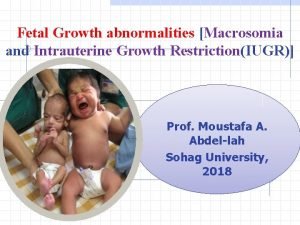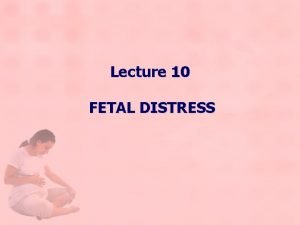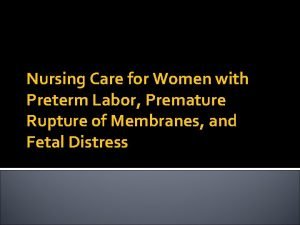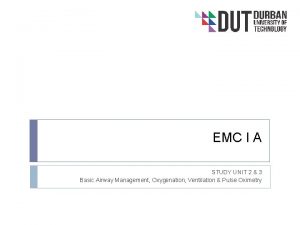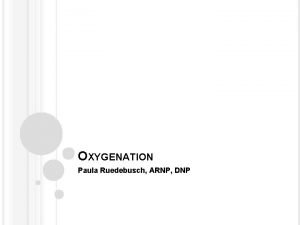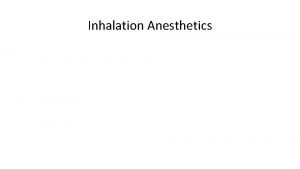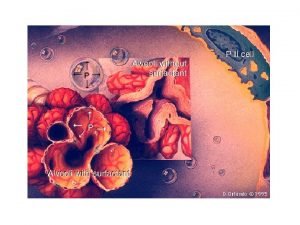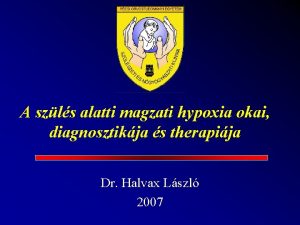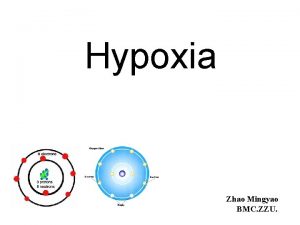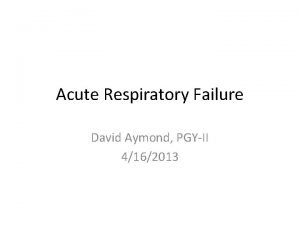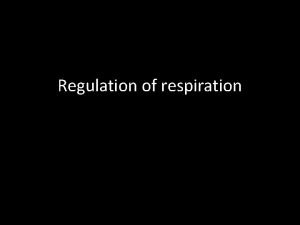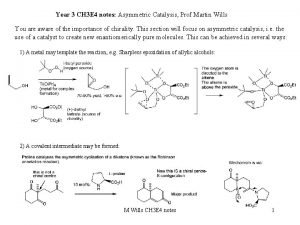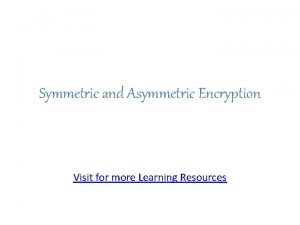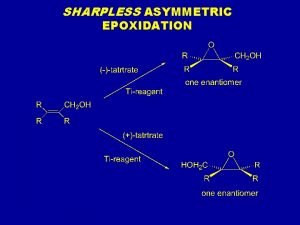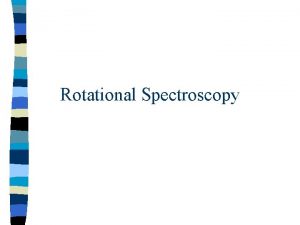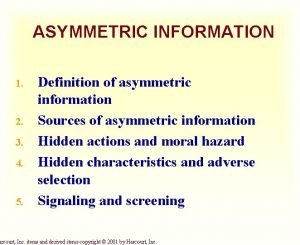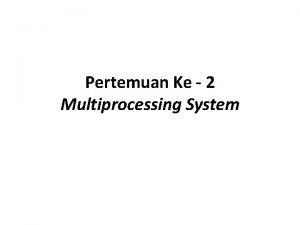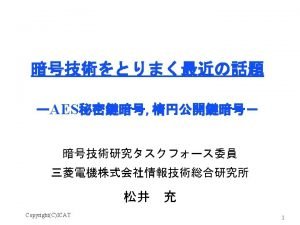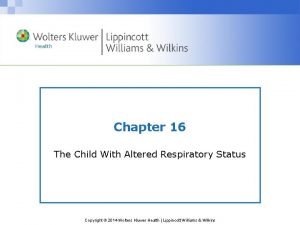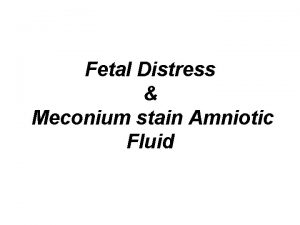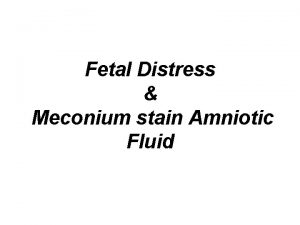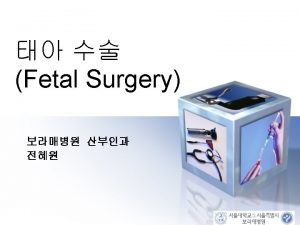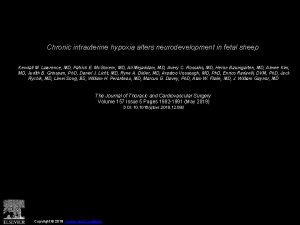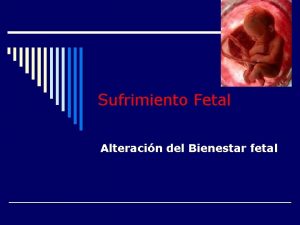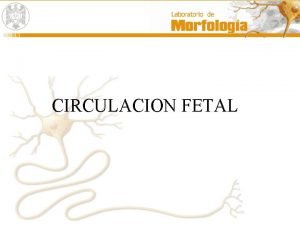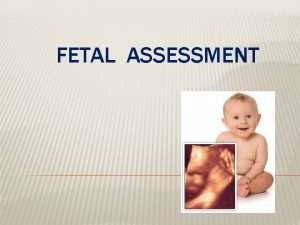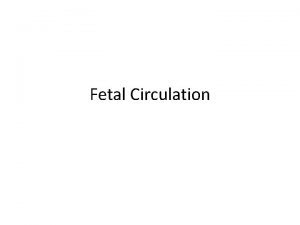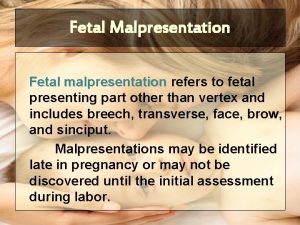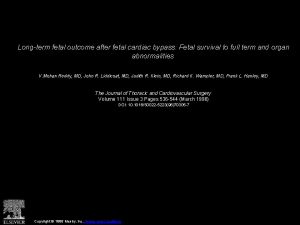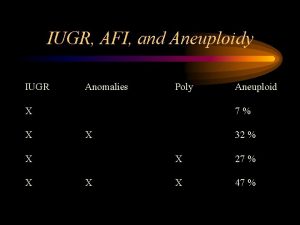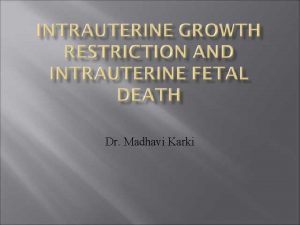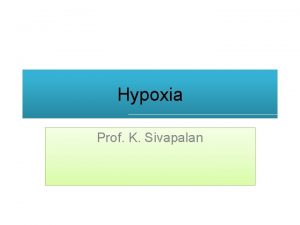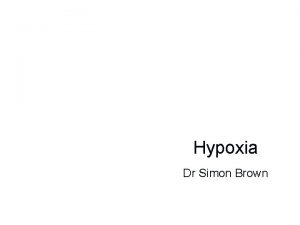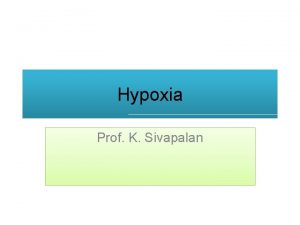IUGR IUGR Asymmetric IUGR Chronic fetal distress hypoxia















































- Slides: 47

IUGR

IUGR Asymmetric IUGR Chronic fetal distress (hypoxia) Preeclampsia Chronic hypertension Diabetes classes D to F Poor caloric intake Symmetric IUGR Genetic Torch Chromosomal Anomalad syndromes Insulin like growth type 1 deficiency

Perinatal problems Fetal death Asphyxia Meconium aspiration pneumonia Fasting hypoglycemia Alimented hyperglycemia Polycythemia/ hyperviscosity Temperature instability Dysmorphology Pulmonary hemorrhage Immunodeficiency Decreased bone mineral density DIC

Hypoglycemia 1. 2. 3. 4. 5. 6. Decreased hepatic glycogen stores Inactive gluconeogenesis Diminished use and oxidation of FFA Hyperinsulinism Deficient catecholamine release Failure of response to exogenic glucagon

Thermal control neutral thermal environment“ environment This environment is a set of thermal conditions, including air and radiating surface temperatures, relative humidity, and airflow, at which heat production (measured experimentally as oxygen consumption) is minimal and the infant's core temperature is within the normal range. It is a function of the size and gestational age and chronological age of an infant; larger, older infants require lower environmental temperatures than smaller, younger infants do.

Methods of heat loss 1 - conduction 2 - convection 3 - evaporation 4 - irradiation

The concept of "Warm Chain" 1. Warm delivery room (> 25°C) 2. Warm resuscitation 3. Immediate drying 4. Skin-to-skin contact between baby and the mother 5. Breastfeeding 6. Bathing and weighing postponed 7. Appropriate clothing and bedding 8. Mother and baby together 9. Warm transportation 10. Training/awareness of healthcare providers

KMC

Incubator care Warmer care

oxygen Administering oxygen to reduce the risk of injury from hypoxia and circulatory insufficiency must be balanced against the risk of hyperoxia to the eyes (retinopathy of prematurity) and oxygen injury to the lungs.

oxygen Although cyanosis must be treated immediately, oxygen is a drug and its use must be carefully regulated to maximize benefit and minimize potential harm. The concentration of inspired oxygen must be adjusted in accordance with the oxygen tension of arterial blood (Pa 02) or noninvasive methods such as continuous pulse oximetry or transcutaneous oxygen measurements.

Oxyhood Nasal CPAP

pulseoximetery In general oxygen saturation should be maintained in the range of 85% to 95%.

Fluid therapy Water intake in term infants is usually begun at 70 ml/kg on day 1 and increased to 120 ml/kg by days 2 -3. Smaller, more premature infants may need to start with 80 ml/kg on day 1 and advance gradually to 150 ml/kg/day.

IV fluid in neonates day 1 2 3 4 5 6 term 70 cc/kg 80 cc/kg 90 cc/kg 100 cc /kg 110 cc /kg 120 cc /kg preterm 80 cc/kg 90 cc/kg 100 cc /kg 110 cc /kg 120 cc /kg 130 cc /kg 7 8 140 cc /kg 150 cc /kg

Insensible water loss BW <1000 - 1250 1251 - 1500 1501 - 1750 1751 - 2000 >2000 IWL(cc/kg/day) 65 55 40 25 20 20

IV fluid Daily weights urine out put - USG BUN Na should be monitored carefully to determine water balance and fluid needs. Clinical observation and physical examination are poor indicators of the state of hydration of premature infants.

TPN The goal of parenteral alimentation is to deliver sufficient calories from glucose, protein, and lipids to promote optimal growth. If a peripheral vein is used, it is advisable to keep the glucose concentration below 12. 5 g/ d. L. If a central vein is used, glucose concentrations as high as 25 g/ d. L may be used (rarely). Intralipid may be initiated at 0. 5 g/kg/24 hr and advanced to 3 g/kg/24 hr, if triglyceride levels remain normal; 0. 5 g/kg/24 hr is sufficient to prevent essential fatty acid deficiency. Aminoacids may be initiated at 0. 5 -1 g/kg on first day of life, advanced to 1. 5 g/kg/day.

Control Intralipid infusion with TG Triglyceride concentrations are most often used as an indication of lipid tolerance, and maintaining triglyceride concentrations below 150 to 200 mg/ d. L seems prudent. Aminoacid infusion with ALT – AST Glucose infusion with BS

Weight gain After a caloric intake of >100 kcal/kg/24 hr is established by total parenteral intravenous nutrition, LBW infants can be expected to gain about 15 g/kg/24 hr.

Feeding Oral feeding (nipple) should not be initiated or should be discontinued in infants with: 1. 2. 3. 4. 5. 6. 7. 8. 9. respiratory distress, hypoxia, circulatory insufficiency, excessive secretions, gagging, Severe sepsis central nervous system depression, severe immaturity, or signs of serious illness.

Oral feeding The process of oral alimentation requires, in addition to a strong sucking effort, coordination of swallowing, epiglottal and uvular closure of the larynx and nasal passages, and normal esophageal motility, a synchronized process that is usually absent before 34 wk of gestation.

feeding most infants weighing <1, 500 g require tube feeding because they are unable to coordinate breathing, sucking, and swallowing.

Methods of feeding intermittent bolus feedings continuous feeding nasojejunal feeding Gastrostomy feeding

Trophic feeding is the practice of feeding very small amounts of enteral nourishment to VLBW preterm infants to stimulate development of the immature gastrointestinal tract. The benefits of trophic feeding include enhanced gut motility, improved growth, decreased need for parenteral nutrition, fewer episodes of sepsis, and shortened hospital stays.

Feeding advancement Feeding is started at 1 cc/kg q 3 h, the rate of daily advancement should not be more than 20 cc/kg/day.

Drop back in feeding vomiting, abdominal distention, or gastric residuals from previous feedings should arouse suspicion of sepsis, necrotizing enterocolitis, or intestinal obstruction.

Adding supplements When the amount of feeding approaches 120 cc/kg/day corresponding to caloric intake of 80 kcal/kg/day the milk should be fortified by adding supplements.



Supplements 1 -folic acid ¼ tab qd for 3 months 2 -vitamin E ¼ tab qod for 3 months 3 -zinc sulfate 1 -2 mg/kg daily for 6 months 4 -Ferrous sulfate 2 -4 mg/kg day* 5 -calcium as gluconate salt 100 mg/kg/day 6 -phosphorus as phosphate Sandoze 50 mg/kg/day 7 -multivitamin 1 ml daily(400 U vitamin D) 8 -Erythropoietin 250 -400 U/kg SC three days/week for 3 weeks if birth weight is 1250 -1500 and for 6 weeks if birth weight is below 1250 g.

Ferrous sulfate *ferrous sulfate is started at 2 mg/kg from the age 2 weeks if birth weight is 1500 -2500 g and at 4 mg/kg from the age of 4 weeks if birth weight is less than 1500 g. In those babies under erythropoietin treatment the dose of ferrous sulfate is 6 mg/kg.

Preterm formula Premature formulas contain a reduced amount of lactose (40% to 50%) because intestinal lactase activity may be low in premature infants. The remainder of the carbohydrate content is in the form of glucose polymers, which maintain low osmolality of the formula. The fat blends of preterm formulas are 20% to 50% MCTs to compensate for low intestinal lipase and bile salts. The protein content of preterm formulas is higher than that of term formulas (2. 7 to 3 g/100 kcal), which promotes a rate of weight gain and body composition similar to that of the reference fetus. Premature formulas are whey predominant, which reduces the risk of lactobezoar formation and may provide a more optimal amino acid intake. Calcium and phosphorus content is also higher in preterm formulas, which results in improved mineral retention and bone mineral content.

Preterm formula If the baby is taking preterm formula at 150 cc/kg/day there will be no need for adding the supplements.

Growth SGA neonates who have symmetric IUGR related to congenital viral, chromosomal, or constitutional syndromes remain small throughout life. Those infants whose intrauterine growth was inhibited late in gestation because of uterine constraints, placental insufficiency, or nutritional deficits will have catch-up growth after birth and approach their inherited growth potentials when provided with an optimal environment.

Developmental outcome Intellectual and neurologic functions in IUGR depends on the presence or absence of adverse perinatal events , in addition to the specific cause of IUGR. Cerebral morbidity will be worsened by hypoxic ischemic encephalopathy subsequent to birth asphyxia, and by the postnatal problems of hypoxia and hypoglycemia. When these perinatal problems are minimal or are avoided, the neonate who is SGA may still demonstrate cerebral developmental problems, especially in the presence of relative head growth retardation. Another major determining influence on neonatal neurodevelopmental outcome in infants who are SGA is the family socioeconomic status.

vaccination Palivizumab (Synagis) should be given according to the respiratory syncytial virus (RSV) policy. Breast feeding by a mother who is positive for hepatitis B surface antigen (HBs. Ag) poses no additional risk for acquisition of hepatitis B virus (HBV) infection by the infant.

Vaccination schedule age birth vaccine comments BCG- OPV hepatitis B 0. 05 ml dose in infants for BCG 2 months DPT- OPV hepatitis B 4 months 6 months DPT- OPV 12 months 18 months 4 -6 years MMR DPT- OPV hepatitis B DPT- OPV MMR

Retinopathy of prematurity

IVH= intraventricular hemorrhage Bleeding from subepandymal germinal matrix. Grade 1= bleeding is confined to germinal matrix Grade 2=intraventricular hemorrhage without ventricular dilation Grade 3=intraventricular hemorrhage with acute ventricular dilation (clot fills >50% of the ventricle) Grade 4= intraparenchymal lesion

intraventricular hemorrhage

Intraventricular hemorrhage


AOP= apnea of prematurity = idiopathic apnea Apnea: Apnea Cessation of respiration for more than 20 seconds, or any duration if associated with bradycardia and cyanosis. The etiology of AOP is immature respiratory center.

NEC=necrotizing enterocolitis A common gastrointestinal emergency of premature neonates that presents with abdominal distention and can culminate in intestinal perforation if left untreated. Etiology: ischemia + infection + concentrated formula Stage 1 Suspected NEC Abdominal distention – bloody stools – emesis – gastric residuals Stage 2 Proven NEC Pneumatosis intestinalis and/or portal venous gas ± metabolic acidosis – thrombocytopenia Stage 3 Advanced NEC Pneumoperitoneum – hypotension – DIC – neutropenia


 Uterus height by week
Uterus height by week Causes of decreased fetal movement
Causes of decreased fetal movement Nursing care for preterm labor
Nursing care for preterm labor Hypoxic hypoxia
Hypoxic hypoxia Tripod position breathing
Tripod position breathing Diffusion hypoxia slideshare
Diffusion hypoxia slideshare Baltic sea hypoxia
Baltic sea hypoxia Diffusion hypoxia slideshare
Diffusion hypoxia slideshare Decrd
Decrd Koponyavégű fekvés
Koponyavégű fekvés Histogenous hypoxia
Histogenous hypoxia Aa gradient equation
Aa gradient equation Type of hypoxia
Type of hypoxia Asymmetric vlan
Asymmetric vlan Asymmetric dominance effect
Asymmetric dominance effect Asymmetric vlan
Asymmetric vlan Asymmetric vlan
Asymmetric vlan Asymmetric synthesis notes
Asymmetric synthesis notes Asymmetric parabola
Asymmetric parabola Two way asymmetrical model example
Two way asymmetrical model example Vlan id 4095
Vlan id 4095 Asymmetric multicore processing
Asymmetric multicore processing Asymmetric key cryptography
Asymmetric key cryptography Sharpless asymmetric epoxidation
Sharpless asymmetric epoxidation Asymmetric vlan
Asymmetric vlan Asymmetric information diagram
Asymmetric information diagram Symmetric vs asymmetric encryption performance
Symmetric vs asymmetric encryption performance Asymmetric key cryptography
Asymmetric key cryptography Sunil gupta actor
Sunil gupta actor Strategic view of ihrm
Strategic view of ihrm Asymmetric communication
Asymmetric communication Asymmetric bandwidth
Asymmetric bandwidth Symmetric and asymmetric matrix
Symmetric and asymmetric matrix Rotational spectral lines
Rotational spectral lines Key distribution
Key distribution Asymmetric information diagram
Asymmetric information diagram Contoh multiprocessor
Contoh multiprocessor Asymmetric synthesis example
Asymmetric synthesis example Des aes
Des aes Game theory asymmetric information
Game theory asymmetric information Asymmetric key authentication
Asymmetric key authentication How much does diltiazem lower blood pressure
How much does diltiazem lower blood pressure Asymmetric encryption java
Asymmetric encryption java Asymmetric communication
Asymmetric communication Distress traffic
Distress traffic Moral distress and burnout
Moral distress and burnout Respiratory distress
Respiratory distress Damsel in distress archetype example
Damsel in distress archetype example
